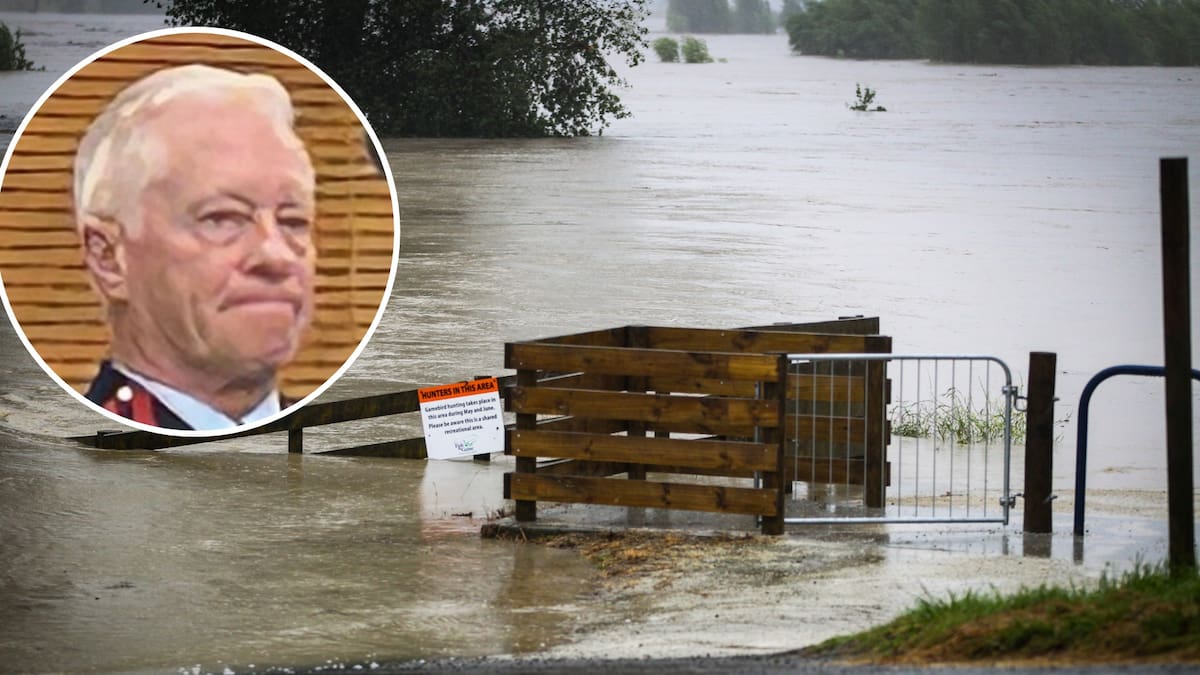That was because emergency responders were unable to get to people as areas became cut off by floodwaters.
“In these extreme circumstances, we were not able to give the clear comfort message that we would be with them soon,” Travers said.
He was speaking to a hearing before Coroner Erin Woolley, who is conducting an inquest into the deaths of 19 people associated with the extreme weather events of January and February 2023.
The coroner has already heard evidence related to deaths in the Auckland Anniversary Weekend floods in January that year.
Coroner Erin Woolley is conducting an inquest into deaths associated with the extreme weather events of January and February 2023. Photo / Jason Dorday
The damage to homes, cars, farmland and roads in the Dartmoor Rd area was substantial after Hawke’s Bay was hit by Cyclone Gabrielle. Photo / Mike Scott
Evidence concerning people who died during or after Cyclone Gabrielle in February is being heard in Hastings over the next two weeks.
Travers told the hearing he had reviewed the 111 calls of the fatal night, during which people were trapped in cars, stuck on their roofs and swept away by floodwaters.
“Some of the calls, even now with the passage of time and away from the turmoil of the night, are distressing to hear,” Travers said.
“We tried to get appliances out to help but they could not access some areas.”
The 111 call-takers tried to do their best in a challenging situation, which left them at times “overwhelmed” as the volume of calls increased.
A lawyer appearing on behalf of the bereaved families, Jane Glover, asked Travers about the case of the Collins family of Esk Valley, who lost their infant daughter when she was swept away in the storm.
Imogen, Jack, Ella and Ivy Collins. Ivy was swept away in rising waters during Cyclone Gabrielle. Photo / Supplied
Glover said the family made multiple 111 calls and had five answered between 5.30am and 8.30am on February 14, as the surviving members of the family and their neighbours huddled in a roof space.
“They were advised that no one was able to come and help them,” Glover said.
The group were eventually rescued by helicopter several hours later.
Glover asked Travers if the advice that no help was coming would be given to the Collins family now.
“I think it’s important that we are honest with callers, so yes,” he said.
“There would be no other advice other than huddling together to keep warm.”
Travers’ voice broke occasionally as he related the events of the night and acknowledged the “desperate situation” some of the callers were in.
He said that at the time of the cyclone, not being able to get responders out to someone trapped or in life-threatening situations was not something rescuers had ever been able to contemplate.
Call-takers were reduced to using their “best endeavours and good faith” to advise callers based on common sense.
Travers said one staff member with 35 years of experience said it was the first time in their career they had felt “inadequate and unable to help”.
Emergency services and helpers rescue people caught up in Cyclone Gabrielle along Links Rd, near Taradale, during the cyclone. Photo / NZME
Wairoa was inundated with floodwater during the cyclone.
Emergency escalated as night went on
Evidence given to the inquest showed how the emergency in Hawke’s Bay and the Tairāwhiti Gisborne region escalated as the night went on.
At 9.30pm on February 13, reports were coming in of people being stuck in their cars on roads between slips.
By 11pm, rivers were bursting their banks. Emergency calls began to back up as the situation became increasingly difficult after midnight.
By 1.30am, a high number of calls were coming from the Esk Valley area, indicating a potential risk to life.
Travers agreed that at that time the situation was “beginning to spiral”, with areas being cut off from rescue attempts.
By 2.15am, people were “smashing ceilings” in an attempt to get above the flood waters.
At 2.45am, callers were “getting frantic” as they were stuck on roofs or stranded in cars.
Local army reservists were called out to help with their high-wheelbase Unimog vehicle.
At 3.05am, authorities realised most 111 calls were no longer coming in from the northern part of Hawke’s Bay or from Tairāwhiti as communications went down.
By 3.30am, the water was so high that rescuers were running out of options. The police wanted helicopters brought in but they couldn’t find anyone who was able to fly in the conditions.
At 4.45am, Hastings firefighters were unable to get through to the Waiohiki and Pakowhai area, which had been inundated.
Widespread flooding and slips were reported from 5am.
Ric Stevens spent many years working for the former New Zealand Press Association news agency, including as a political reporter at Parliament, before holding senior positions at various daily newspapers. He joined NZME’s Open Justice team in 2022 and is based in Hawke’s Bay.

